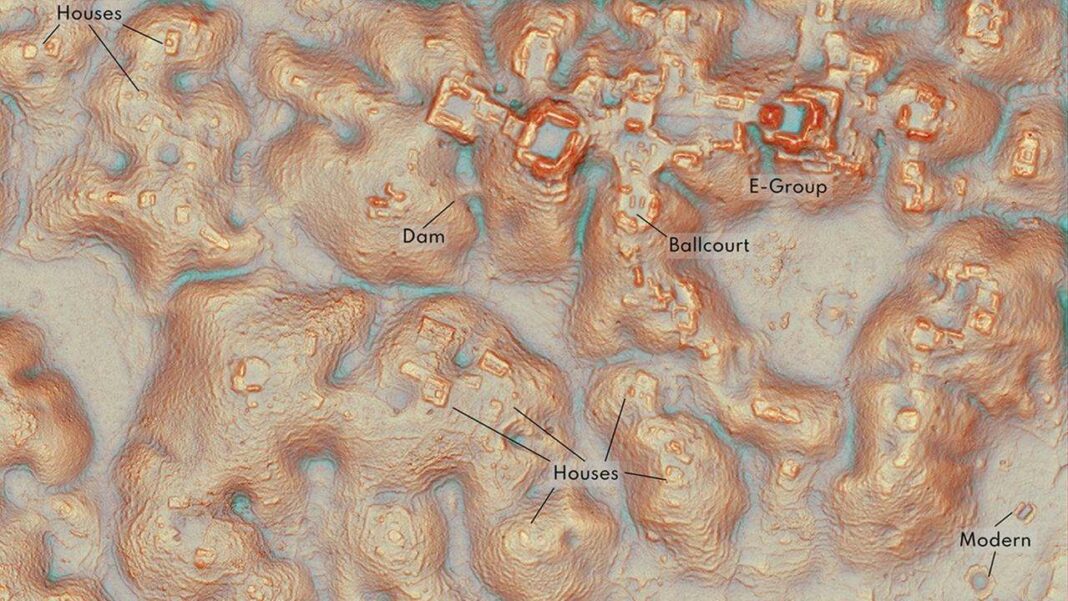Researchers have uncovered a vast, previously hidden Maya city in Mexico, potentially home to 30,000-50,000 residents during its peak. Utilizing advanced LiDAR technology, they identified over 6,000 structures, revealing an unexpected urbanized society. The discovery challenges the notion that the Maya primarily lived in rural areas and highlights their innovative agricultural practices. Named ‘Valeriana,’ this site is set to attract millions of tourists with the upcoming ‘Tren Maya’ railway, offering insights into sustainable living for future generations.
Unveiling the Lost City of the Maya
In a remarkable breakthrough for the study of Maya civilization, researchers have uncovered an expansive, previously hidden city in Mexico. This astonishing find suggests that as many as 50,000 inhabitants may have once called this city home.
The Innovative Techniques Behind the Discovery
A sensational announcement has emerged from the Mexican media, revealing the discovery of a colossal Maya site situated in the Campeche state of southeastern Mexico. What makes this find even more extraordinary is that it was achieved without any excavation or traditional archaeological methods.
Located adjacent to a busy highway and agricultural fields, this Maya site had evaded detection until now. A team of researchers, led by American archaeologist Luke Auld-Thomas from Tulane University, utilized cutting-edge laser technology known as LiDAR, which stands for Light Detection and Ranging, to identify the hidden structures beneath the forest canopy.
The LiDAR imagery not only reveals the layout of the Maya city but also suggests the presence of various features such as ditches, pits, and collapsed caves, enhancing our understanding of this ancient civilization.
Interestingly, the journey to this discovery began with a simple Google search, where Auld-Thomas stumbled upon laser data collected in 2013 by a Mexican environmental group. This data, initially aimed at studying rainforest ecology, displayed architectural structures that piqued his interest. By digitally removing the trees, Auld-Thomas uncovered ‘a truly significant Maya city that was previously unknown to the scientific community.’
The newly discovered city has been fittingly named ‘Valeriana,’ after a nearby lagoon. The sophisticated remote sensing technology employed allowed researchers to accurately measure distances and uncover the heights of underlying structures, revealing over 6,000 ancient buildings, reservoirs, plazas, pyramid complexes, and palaces in the area. Auld-Thomas noted, ‘The entire spectrum of what one would expect as an expert in an ancient Maya city was present in this dataset.’
With the anticipated launch of the ‘Tren Maya’ railway, millions of tourists are expected to visit this region, potentially leading to further archaeological discoveries.
The findings indicate that the Maya city likely thrived between 750 and 850 AD, accommodating between 30,000 and 50,000 residents at its peak. Auld-Thomas explained that such urban centers are not uncommon in the Maya region, stating, ‘The dataset I analyzed is essentially the equivalent of an arrow thrown at a map that hits a city.’
He further emphasized that this discovery challenges the prevailing belief that the Maya predominantly inhabited rural areas and smaller settlements, suggesting instead that they had established a complex urbanized society.
Despite lacking metal tools, wheeled vehicles, and pack animals, the Maya successfully sustained large populations in significant cities, employing innovative agricultural techniques like terracing to manage soil moisture during droughts. This demonstrates that they were a resilient civilization capable of adapting to environmental changes over centuries.
Researchers believe that the Maya’s way of life and urban planning methods could provide valuable insights for contemporary sustainable living practices, inspiring future generations to explore more environmentally friendly approaches to urban development.
